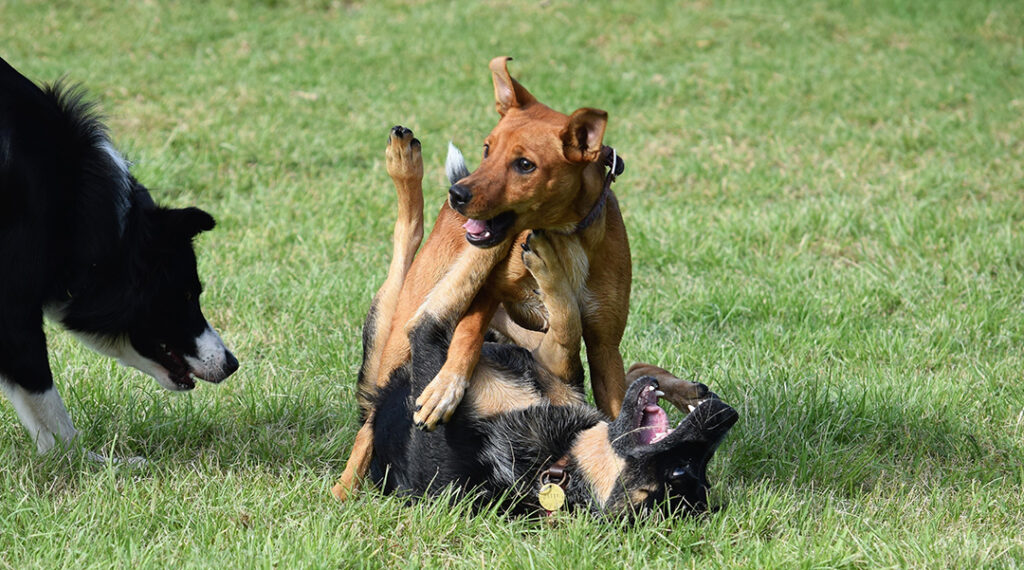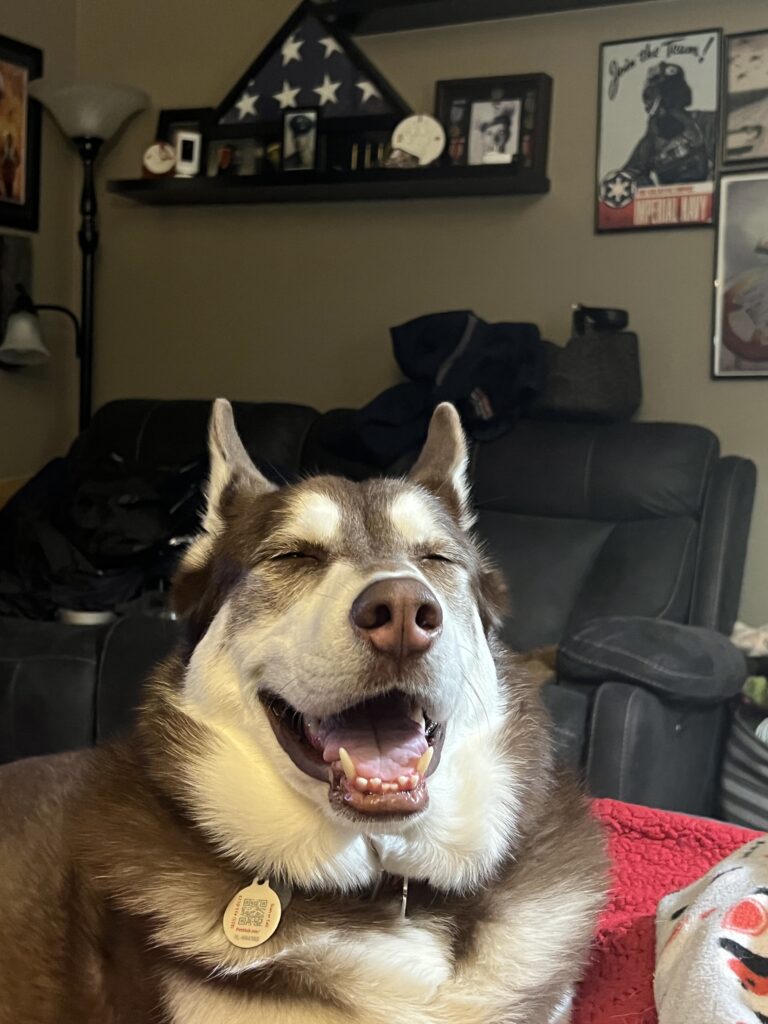We all know dogs cannot speak unless you are Scooby Doo. Dogs communicate through their body language and reading the dog’s body language can protect you from an aggressive/fearful dog. Here are some things to look for when you encounter a dog you do not know.

Tail wagging
Let us begin our discussion on reading a dog’s body language with tail wagging. We have all thought that if a dog is wagging his tail, she is happy and excited to see us, right? That was the old way of thinking and today it is not necessarily true. A dog wagging her tail just means she is emotionally aroused. It could be excitement, fear, aggression, alertness, or worse. We need to look at how the tail is wagging to determine the dog’s intention.
A slow side-to-side wag usually means the dog is relaxed, the kind of wag you see when you get home to your dog. A high fast twitch wag usually means the dog is aroused and in a negative way.
Also, look at the height of the tail. If the tail is high, it usually means the dog is assertive and aggressive. Tais that are pointed down and even between their legs show a dog that is fearful and/or stressed. Tails in a neutral position usually mean the dog is relaxed.
Eyes
Looking at the dogs’ eyes can also tell us a lot about what the dog is feeling. Soft squinty eyes usually show calm and relaxation. In contrast, large hard eyes intently staring shows a negative state of mind, like aggression.
Humans are taught that we talk to each other and that making eye contact is important. This is the opposite for dogs. Making eye contact may make a dog feel you are a threat, and they may become aggressive. It’s important to watch and see if a dog has large hard eyes. If they do, do not make direct eye contact with them. Watch them with a side eye, until they are comfortable with you.

Another thing to look for is whale eye. The whale eye is when the dog is showing the whites of its eyes. This happens when the dog is anxious and stressed.
Ears
Looking at the dogs’ ears will also tell us about their state of mind. If the ears are in their natural position, slightly forward, and relaxed, the dog shows a happy, neutral demeanor. In contrast, if the ears are flat against their head or out to the side, it will show a stressed and fearful dog.
Body posture
If you see a dog with its head forward, tail high and rigid, standing erect, and its weight shifted forward, this will show a fearful and aggressive dog, A dog with high relaxed head, neutral tail, and weight evenly shifted on all four paws will show a neutral and friendly dog.
Piloerection
Piloerection, we know it more commonly as hackles, is another indicator of a dog’s state of mind. If you see a dog’s hackles raised, it does not necessarily mean they are aggressive. It could mean they are excited or interested in something, You will need to look at the other indicators discussed above to get the full picture of whether the dog is aggressive/stressed or neutral/interested.
This is just a primer on how to read a dog’s body language. There are many books and articles out there that will give you more information Here are some helpful articles.
Canine Communication – Interpreting Dog Language
Call us if you need pet sitting or dog walking services.
